Sound Art and Interactivity in Singapore
SI13 and More

The SI13 NTU/ADM Symposium on Sound and Interactivity in Singapore provided a meeting point for local researchers, artists, scholars and students working creatively with sound and interactivity, as well as the foundation for an issue exploring sound and interactivity in the Southeast Asian country.
About this Issue
Editorial
Articles
Aesthetics and Perspectives
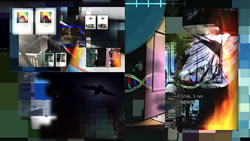
Interactive Sound: Generative approaches from computation and cognitive sciences
Keynote Speaker for SI13 Roger Dean gives an overview of algorithmic approaches that enable an expressive music dialogue between a musician and a computer in a live concert performance. Themes such as statistical models and computational models of cognition as well as live coding are discussed.
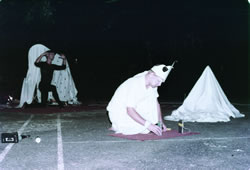
Just Outside our Hearing
As well as raising an impassioned call for attentive listening as an act of engagement with society, Loh’s article also introduces the reader to sound artists in the Singaporean scene who have been central to its development over the past two decades.

“The Thing About Listening is…”: Compositional approaches and inspiration using spoken word, field recordings and electroacoustic techniques
A series of serendipitous encounters and compositional decisions resulted in a surround soundscape composition. The structure of the piece sprung from voice recordings that were carefully subjected to signal processing in order to create a recontextualized story about Martin’s Irish hometown.

The Music of T.S. Eliot’s Poetry: Integrating text, live performance, sound design and video in a multimedia theatre production of “The Waste Land”
Eliot’s “music of poetry” has informed the authors’ compositional strategies for creating their production of The Waste Land as a one-actor multimedia performance. The counterpoint of text, video, acting and soundscape stimulates the audience’s imagination and uncovers nuanced and multiple meanings in the epic poem.

Considering Interaction in Live Coding through a Pragmatic Aesthetic Theory
Live coding is more appropriately framed as a performance method rather than a genre. By revising John Dewey’s æsthetic theory of intention-appraisal-evaluation, the author sheds light on the communication of meaning and affect in live coding interactive art experiences.
Music and Audio Analysis
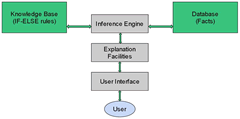
Symbolic Representation of Chords for Rule-Based Evaluation of Tonal Progressions
The authors describe work on interactive educational software for learning tonal harmony. They argue for a rule-based computational system aligned with the harmonic theory taught to best offer relevant feedback for the students. The encoding system is then explained.
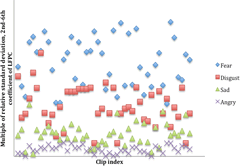
Defining the Dominance Axis of the 3D Emotional Model for Expressive Human Audio Emotion
Building on Thayer and others’ emotional models, Lui presents a method to predict basic emotions in speech audio from acoustic parameters. It is the first phase of a project aiming to create emotion-controlled game-like music applications for health and therapy.
Interactive Software in Performance

Interacting with a Corpus of Sounds
Describing corpus-based concatenative synthesis and ways to interact with his CataRT software, Diemo Schwarz’s Keynote Lecture provides examples from numerous creative works, including his recent collaboration with Paris-based User Studio in developing a new type of “happily messy” haptic interface called DIRTI (Dirty Tangible Interface).
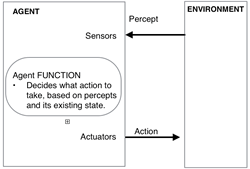
Interactive Composing with Autonomous Agents
Spicer describes an agent-based interactive system programmed in Pure Data that the he has used for both improvisation and composition. The different types of agents — performers, controllers and mixers — have a certain degree of autonomy in modulating live audio input.
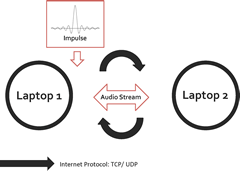
Interactive Sound Synthesis Mediated through Computer Networks
The authors present their approach to interactive laptop performance, in which network latency influences synthesis output. A deceptively simple impulse-feedback principle generates complex sound textures, allowing the performers to quite literally “play the network.”

VIE, An Automata Sequencer: Performance and composition through metaphorical representation of living organisms
VIE is a generative MIDI sequencer based on Conway’s Game of Life. A set of rules about cellular life and death are used to determine the musical output. The software is open source and has already been employed in laptop performances as well as in robotic installations.

“One at a Time by Voice”: Performing with the voice-controlled interface for digital musical instruments
A novel approach by the authors enables expressive control over audio synthesis with the voice alone. The parameter mapping strategy is based on machine-learning techniques, while the audio input (the voice) is analysed and the parameters are projected onto one or more output instruments.
Interviews

Letting Time and Sound Pass: Interview with Singaporean composer Joyce Beetuan Koh
In a dialogue with Haykal Koh, one of Singapore’s most versatile and experienced music artists juxtaposes her sound art with music composition, acoustic sound with electronic and collaboration with individualism.

A Multi-Faceted, Concrete Art: Conversation with Chinese composer Dajuin Yao
A range of experiences — from contemporary music to Jazz — at Berkeley in the 1970s form Yao’s inclusive theories about sound art. Since the 1990s, he has been instrumental in the promotion of Chinese electronic music, founding the Chinese Computer Music Association in 1999.
The “Oriental Element” in Chinese Electroacoustic Works: Conversation with Chinese composer Xiaofu Zhang
Director of the Center for Electroacoustic Music of China, Zhang explains that state-sponsored studies abroad in the 1990s provided an impetus for the development of electronic music in China. An “Eastern æsthetic” is a natural part of electroacoustic works composed in China today.
Columns

[COMMUNITY REPORTS] Sound Art Singapore: Conversation with Pete Kellock, Zul Mahmod and Mark Wong
A “constructed multilogue” based on Lindborg’s interviews with three colleagues presents various perspectives of how traditions, trends, individuals, institutions and æsthetics have formed the Singapore sound art scene of today.
Other Items
SONUS.ca
Works by some authors and / or artists in this issue can be heard in SONUS.ca, the CEC’s online electroacoustic jukebox:
Social top